18 February 1778 Wednesday
Vases, Candelabra, Grave Stones, Sarcophagi. Tripods, Lamps and Ancient Ornaments volume I
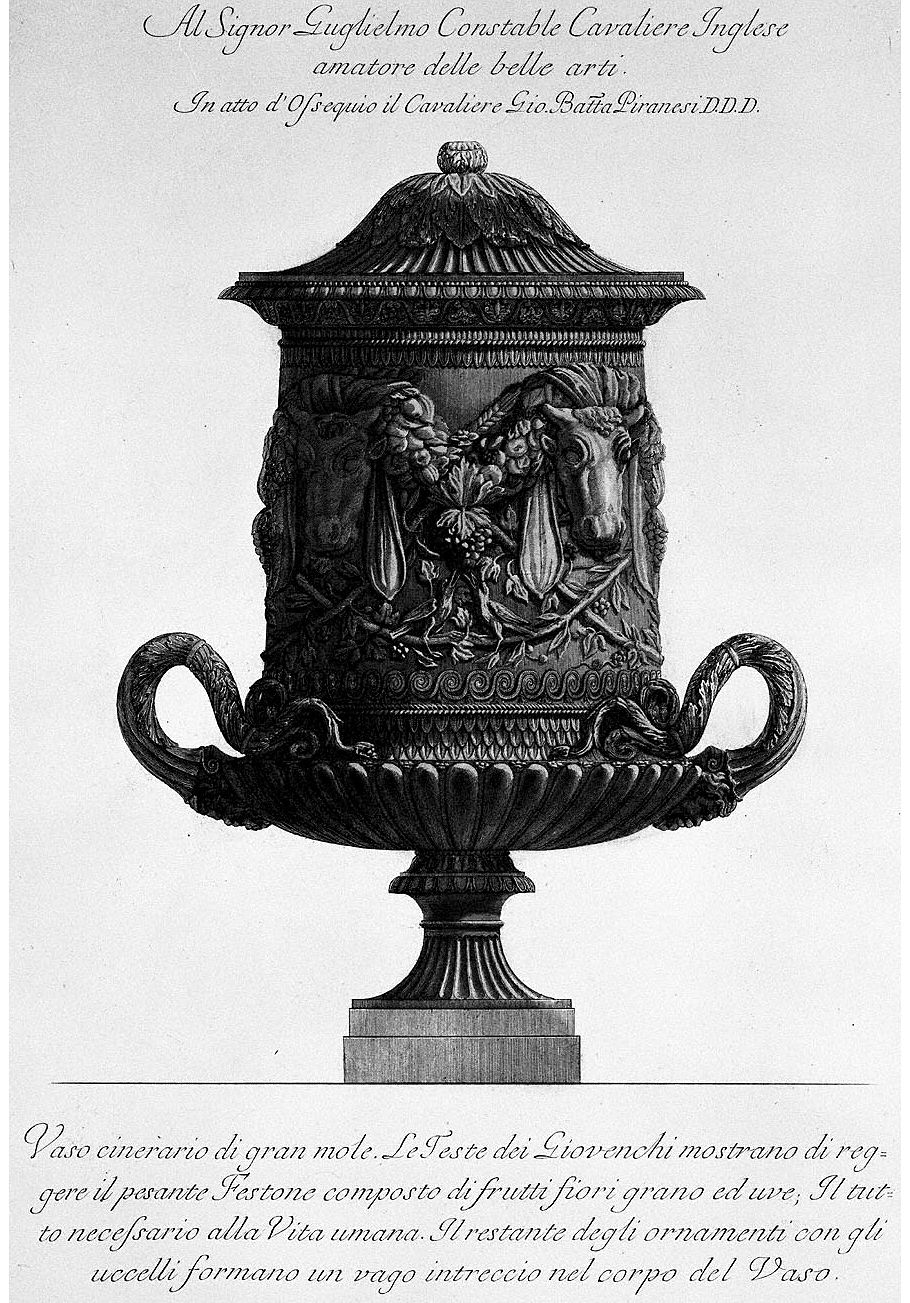
To Signor Guglielmo Constable English Knight lover of the fine arts.
In deed of respect the Knight Gio. Batt(ist)a Piranesi D. D. D.
Cinerary vase of great size. The Bullocks' Heads appear to be holding the heavy Festoon composed of fruits, flowers, grain and grapes; Everything necessary for human life. The rest of the ornaments with the birds form a vague interweaving in the body of the Vase.
18 February 1812 Tuesday
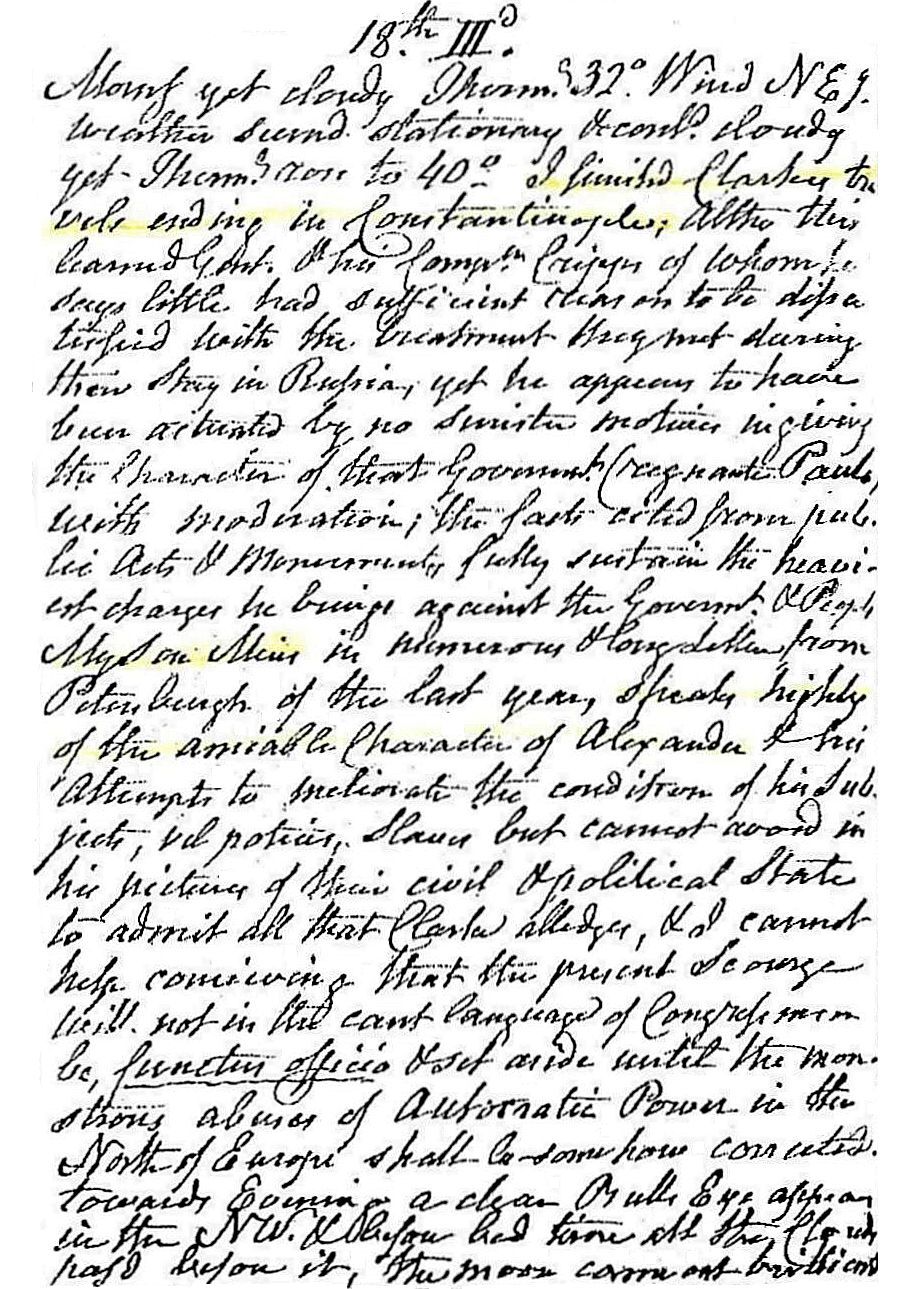
Morning yet cloudy. Therm. 32°. Wind NEerly. Weather seemed stationary and continued cloudy yet therm, rose to 40°. I finished Clark's Travels ending in Constantinople. Altho this gentleman and his companion Cripps, of whom he say little, had sufficient reason to be dissatisfied with the treatment they met during their stay in Russia, yet he appears to have been activated by no sinister motives in giving the character of that government (.......... Pauls) with moderation; the facts[?] cited from public acts and monuments fully sustain the heaviest charges he brings against the government and people. My son Miers in numerous and long letters from Petersburg of the last year speaks highly of the amiable character of Alexander and his attempts to ameliorate the conditions of his subjects, vil potices[?], slaves[?], but cannot avoid in his picture of their civil and political state to admit all the Clarke alleges. And I cannot help conceiving that the present scourge will not in the .....[?] language of Congressmen be functus officio and set aside until the monstrous abuses of autocratic power in the north of Europe shall be somehow corrected. Towards evening a clear bull's eye appeared in the NW, and before bed time all the clouds passed before it. The moon came out brilliant.
18 February 2000
Re: [Re:] enactment
Perhaps all abstractions are highly idealized reenactments of reality, rather than reality being a reenactment of highly idealized abstractions.
18 February 2007
what is today's movement?
Name any current mathematical, scientific or philosophical theory, and there's an architecture that will try to reenact it.
Look at the architecture of Mies, Le Corbusier (especially the late works), and Kahn (especially the early works), and there's a lot of contemporary architecture reenacting all that.
Philip Johnson's architecture is one reenactment after another.
Frank Gehry's architecture evolves via reenacting itself.
You want something original? Just reenact with a twist.
18 February2014
18 February
Last night I read all of the 27 indexed citings of Kahn, L. within Tafuri's Theories and History of Architecture (1976), and [wouldn't it be neat when all texts are available as e-books so you could then customize the order of the texts by order of index because] a somewhat revealing subtext manifest itself, like a strong, contiguous thread of thought came more and more into full focus. This will be further analyzed once all the passages are compiled and pieced 'chronologically' together.
This morning I read (again) a good bit of Biraghi's "Kahn as Destroyer" which begins with an analysis/interpretation of Tafuri's first published critique of Kahn's work--"Storicita di Louis Kahn" (1964)--which, from what I can gather, is a critique of Kahn's work via a review of Vincent Scully's Louis I. Kahn. One would hope that Tafuri could read English, but there was certainly nothing stopping him from scrutinizing all the numerous images that chronical Kahn's work up to that point along with some examples of historical context and/or inspiration. Thus, while looking at the images within Scully's Louis I. Kahn now, and at the same time being well aware of Tafuri's writings on Kahn, you can see what is the greater inspiration behind Tafuri's whole critique of contemporary architecture and 'history', even to the point where it was indeed Kahn that lead Tafuri to his 'analysis' of Piranesi's Campo Marzio. I'm still in the process of absorbing all this myself, but it turns out Kahn wasn't the 'destroyer', rather he was the inspiration to Tafuri's counterpoint. Basically, without Kahn the counterpoint would never have happened.
Two images of Piranesi's Campo Marzio appear within Scully's Louis I. Kahn: first the plan on its own, and second the plan with a Kahn sketch of Market Street East Redevelopment Project hanging over it.
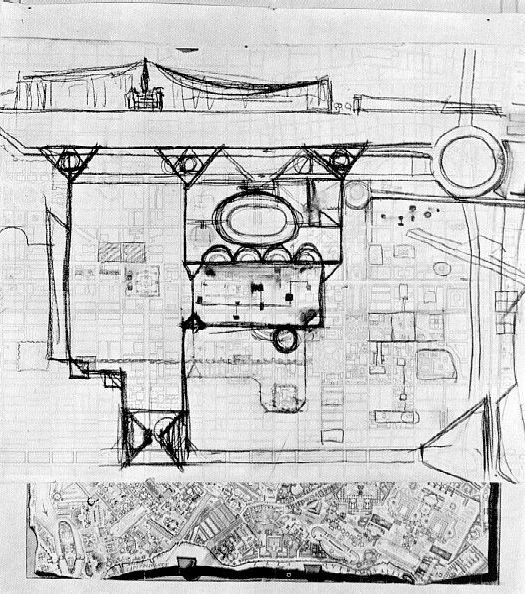
"More directly, the shapes used by Kahn can be found not only in Choisy but also infinitely repeated in the composite photostat of Giovanni Battista Piranesi's map of Rome, drawn by him for his book on the Campus Martius, probably of 1762, which now hangs in front of Kahn's desk."
Vincent Scully, Jr., Louis I. Kahn (New York: George Braziller, Inc., 1962). p. 37
Tafuri first presented the paper "Giovan Battista Piranesi. L'Architettura come 'utopia negativa' in 1970.
18 February 2019
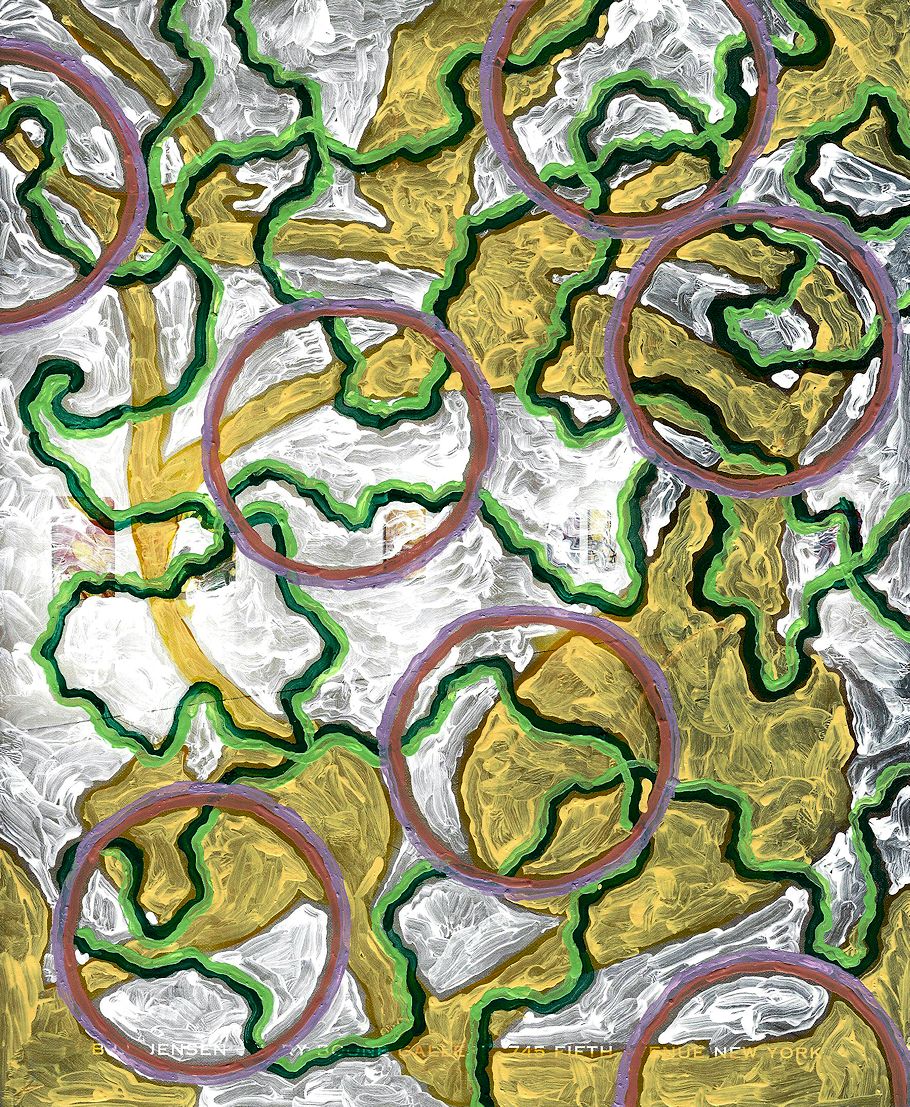
Mary Boone's 180 hours of community service hour 6
18 February 2023 Saturday
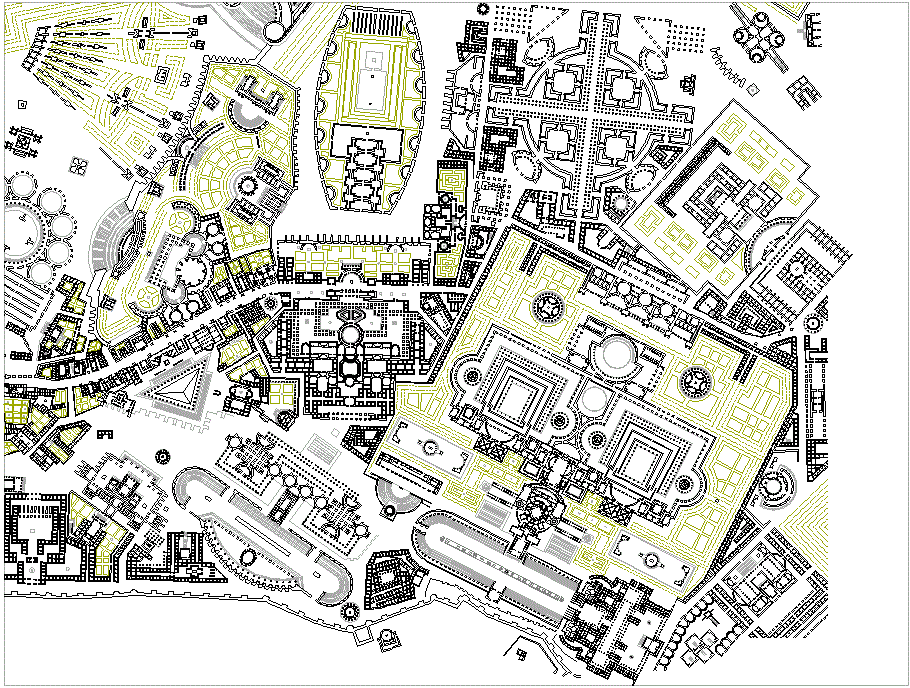
Ichnographia Campus Martius Tab. VIII first state
Raccolta de' tempj antichi Parti I
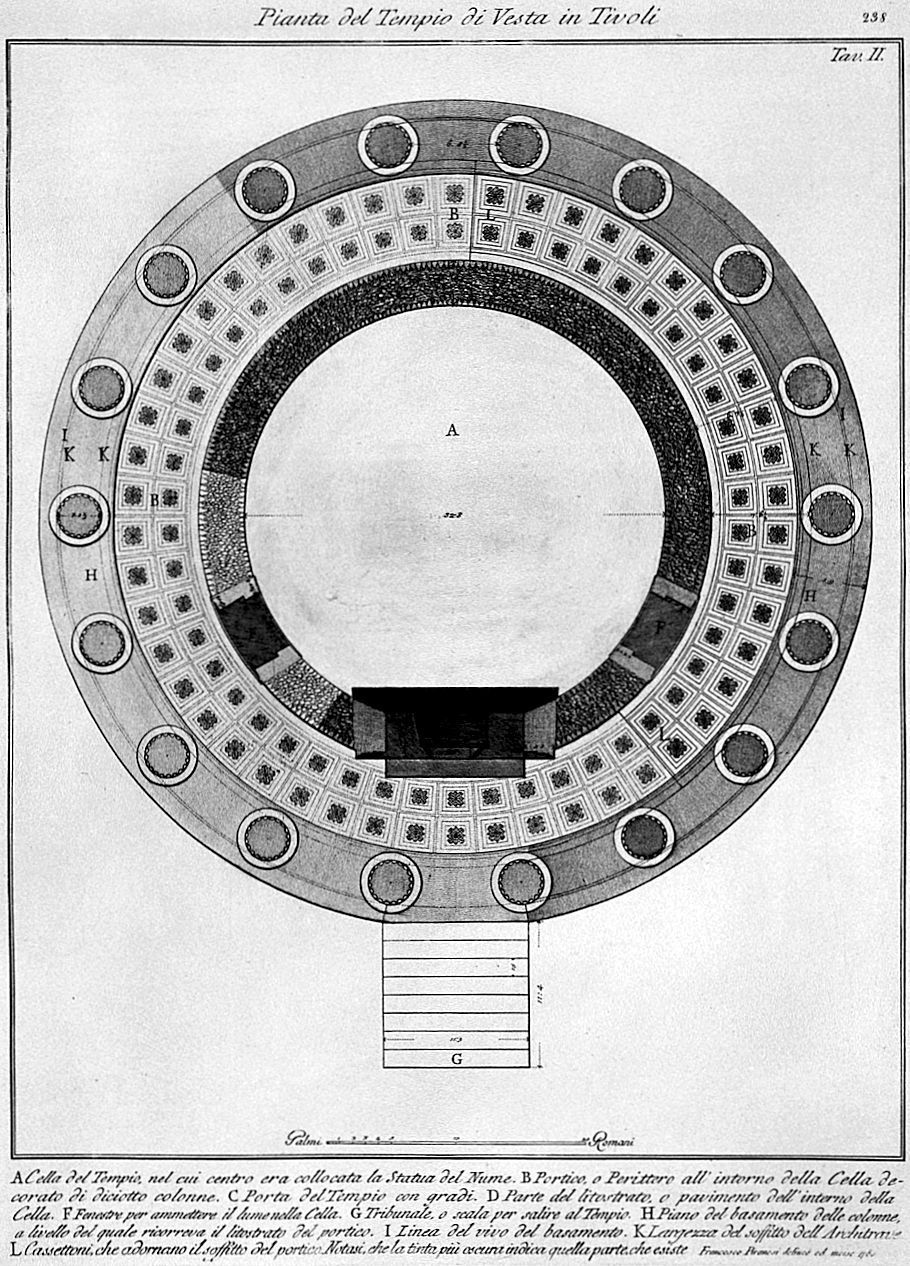
Plan of the Temple of Vesta in Tivoli.
A. Cella del Tempio, in the center of which was the Statue of the Nume. B. Portico, or Perittero around the Cella decorated with eighteen columns. C. Temple door with degrees. D. Part of the lithostrate, or floor of the interior of the Cella. F. Fenestre to admit the light into the Cell. G. Tribunal, or stairs to go up to the Temple. H. Plane of the base of the columns, at the level of which the lithostlum of the portico recurred. I. Baseline live line. K. Width of the architrave ceiling. L. Chest of drawers, which adorn the ceiling of the porch. Note that the darkest tint indicates that part that exists.
Francesco Piranesi drew and engraved 1780
|